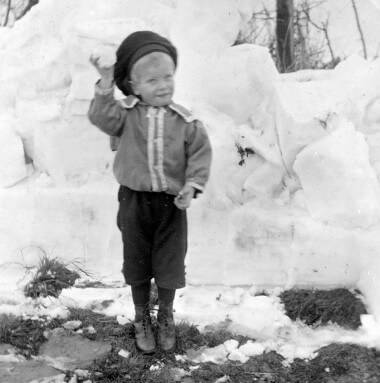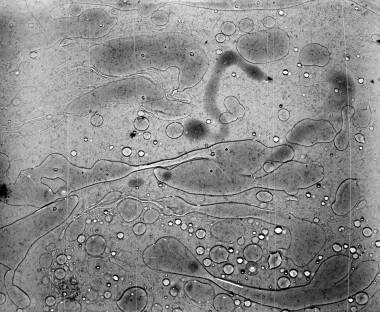Vesni Durakov 1914 – 2015
Animation websites in Russia are reporting that legendary Soviet animator Vesni Durakov has passed away in St Petersburg. Vesni Durakov is probably the best-known animator from the obscure former Soviet republic of Olistan.
Durakov was born in 1914 to peasant farmer parents, Erich and Olga Durakov. His rural upbringing instilled in him a fascination with nature, which provided the inspiration for many of his films.
After a basic education in his home village, the young Vesni ventured to Olistan’s capital city, Aaruga, where he was granted a place at the Aaruga Art Institute. Here he was introduced to animation by the renowned master, Evgeni Huff. For much of his time at the college he acted as assistant to Huff, who was working on his ill-fated feature film of The Brothers Karamazov. (For this production Huff was using the medium of life-size marble statues; each frame required a new marble statue of each character in the scene. Refusing to cut corners, Huff insisted on new statues for each frame even for characters who weren’t moving. He helped to finance the film by selling the photographed statues to garden centres.)
After completing his studies Durakov returned to his native province and set up a small studio. Here, funded by the Olistan Bureau of Propaganda and Light Entertainment, he made a succession of experimental films. The first to achieve international recognition was the experimental 15-minute model animation, Ant Colony (1937). Ostensibly a subtle and ingenious satire on the regimented nature of communist society in Olistan at the time, Ant Colony has since been appreciated for what it really is, a simple-minded child’s fairy tale of the type suppressed by the Olistan regime of the 1930s.
Although the integrity of the narrative is not in question the film has been the subject of controversy for many years on account of the techniques involved.
Durakov explained at the time that each of the ants in the film was of course a model which had to be moved by hand every single frame. With anything up to 1000 ants in the frame at any one time, each with eight legs and two feelers, this involved 240,000 individual movements per second of action, or 216,000,000 over the whole film. For many years it remained a mystery how Durakov managed to make the film in a single afternoon as he claimed, until his younger brother Fezzik revealed in a letter to the Olistan Approved Arts Review in 1956 that he had simply pointed the camera at an anthill and left it running while he went for his tea.
It was in an effort to recover from this blow to his reputation that Durakov embarked upon his best-known film, Cow Dance (1964), in which a field of cows perform a traditional country dance to music performed by an ensemble from Durakov’s own village.
For this film real cows were used. To achieve the effect of them performing an organised traditional dance, Durakov set up his camera overlooking a field of cows and took one frame every hour of daylight for 25 years. The resulting 110,000 frames were then painstakingly searched for those in which the positions of the cows in the field most closely resembled positions of the dance (among other things this involved capturing the only occasion in 25 years in which the cows, purely by chance, were arranged in two rows facing each other) and editing those frames together to form the finished 17-second film.
This film has been criticised for its technical inadequacies, principally the fluctuation in light levels and the fact that a random two-thirds of the frames in the film are in black-and-white and the rest in colour. Durakov hoped to correct this in his follow-up film, Sheep Dance, but ran out of funds for the project after only eight years. Potential sponsors were unimpressed by his preview footage of several sheep standing around in a disused aircraft hangar.
Durakov is perhaps best known today for his experiments with alternative methods of viewing animation, including his invention of the eporteoz, or ‘reversed zoetrope’, in which the viewer sits on a swivel chair in the middle of a circular room lined with a series of images which are illuminated with a strobe light while the viewer spins round in the chair.
Also to his credit is the so-called ‘real moving picture’ technique, in which the animation is presented in the form of a series of large paintings which are carried in darkness onto the stage of a theatre one at a time; each painting is held in position for thirty seconds while the lights are turned on, then carried off to be replaced by the next one, and so on. The illusion of animation is created by drugging the audience into a state of mind in which time seems to be passing at 1000 times its normal speed. Audiences for the first performances reportedly left the cinema very impressed, several describing the film, Goat Dance, as ‘really wild’; however several complaints were later received from those who got home to find that they had been away for three weeks and their pets had died.
Fezzik Durakov, who by this time was one of Olistan’s leading film critics, remarked in an article in the Olistan Approved Arts Review that Goat Dance formed a profound contrast to Vesni’s other films, most of which were only a few minutes long but seemed like weeks. Either way, he added, drugging the audiences seemed like a good idea.
Durakov considered his masterpiece to be the zany comedy Dmitri Smith Goes to Moscow (1959). The story concerns a woolly mammoth who, upon being thawed from a glacier after thousands of years, finds himself faced with the challenge of earning a living in the modern world. An astute commentary on the struggles of the individual to find a place in a conformist society, it is rich in sophisticated visual gags and subtle nuances of character. The achievement is all the greater for having been executed in the challenging medium of oil-in-glass. Not to be confused with oil-on-glass, this technique involves carefully dropping globules of crude oil into a large glass of water in such a way that, as they fall through the liquid, they momentarily form into the desired shape. At that moment one frame of film is photographed. Needless to say much trial and error is involved, and consequently the ninety-second film took several years to complete. In addition, Durakov was making Cow Dance at the same time, and, as he only owned one camera, he had to dismantle his set-up, erect it in exactly the right spot overlooking the field, shoot a frame then return the camera to the same spot in the studio, repeating the process up to fourteen times a day.
Dmitri Smith Goes to Moscow won a prize at the prestigious Ulaan Bator Animation and Wickerwork Festival the following year, but Durakov was mortified to learn that the award was for ‘best experimental abstract film’.
Durakov has been variously described as a ‘naïve genius’, a ‘master of innovation’ and ‘a sad weirdo of the first order’, but the last word must come from a man who lived most of his life in Vesni’s shadow, Fezzik Durakov, who described his brother in an article in the Olistan Approved Arts Review as ‘a talentless geek who only took up films because he was too zasraný lazy to work in the fields’.
Vesni Durakov
Born: Olistan, 1st April 1914
Died: St Petersberg, 1st April 2015




